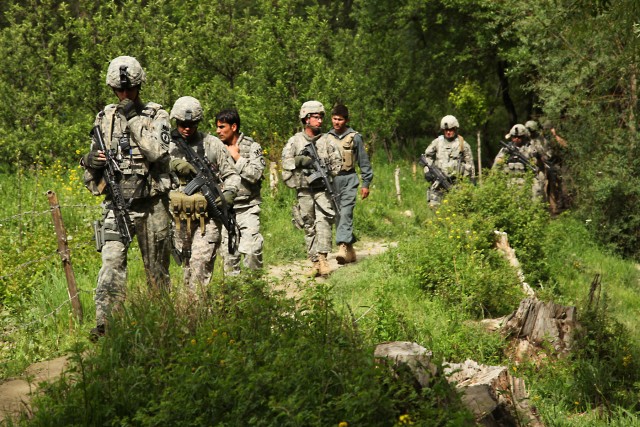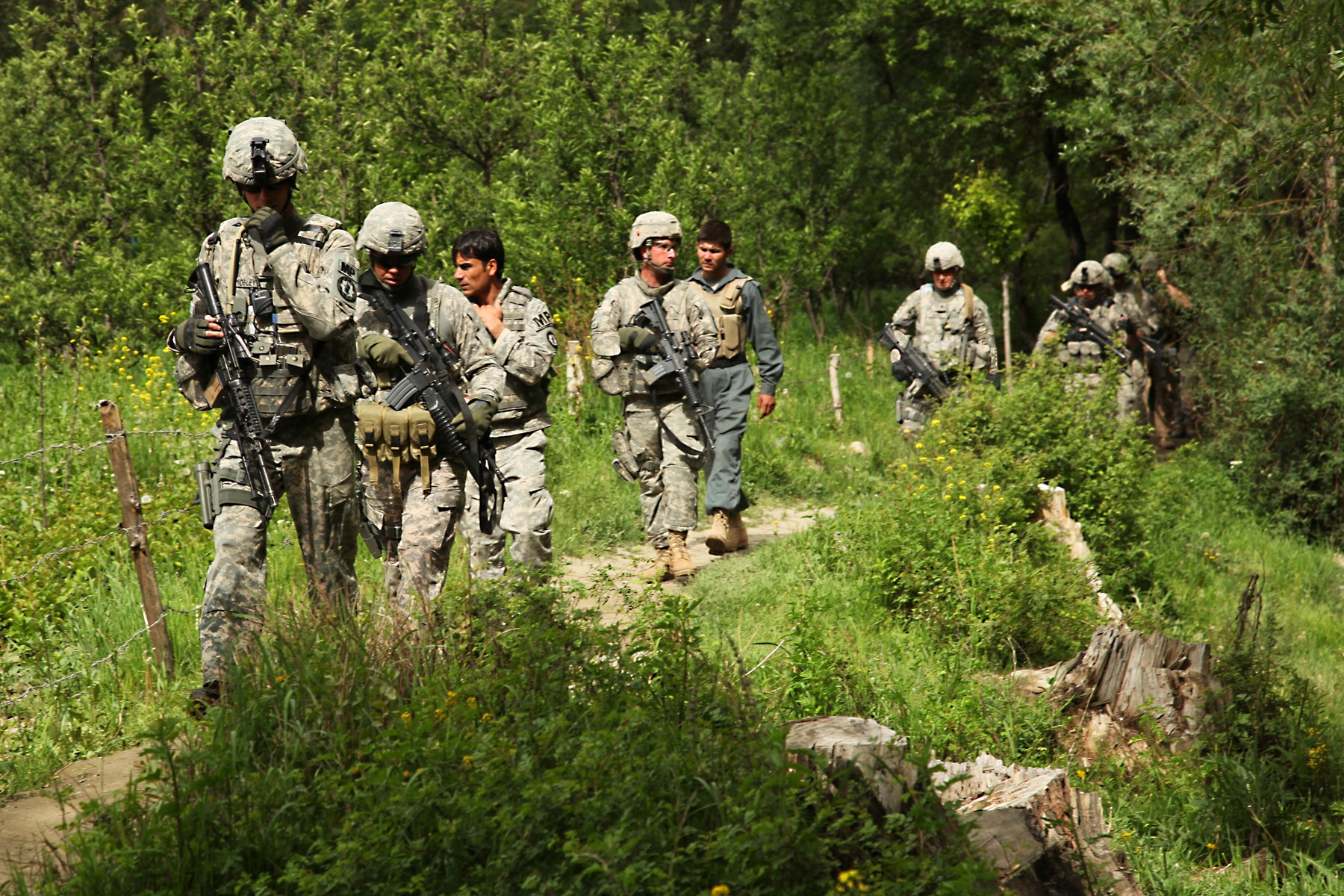
WASHINGTON (July 9, 2010) -- The campaign to build the Afghan National Security Force to 305,000 members is ahead of schedule and many advances have been made, but a senior officer said there are still obstacles to overcome by October 2011.
Col. John Ferrari, deputy commander for programs, NATO Training Mission - Afghanistan, Combined Security Transitions Command-Afghanistan, spoke with bloggers on a DoDLive Bloggers Roundtable, July 8, about how the training mission is proceeding.
Ferrari is personally responsible for dedicating resources to the Afghan National Police and Afghan National Army to fight the counter-insurgency while using his resources to build the Afghan economy.
His command works with regional coalition commands and Afghan National Security Force leaders to determine ANSF training, life-support and work construction projects. Contracted construction companies, a majority of the employees being Afghan, build the facilities.
CSTC-A procures the equipment the ANSF uses, ranging from boots and uniforms to weapons and vehicles; and things to sustain the force in the field like fuel, spare parts and even firewood. The budget also covers all training costs for Afghan security forces.
Ferarri told a story about procurement in the country: When U.S. Army Lt. Gen. William Caldwell arrived in Afghanistan, he found that NATO forces were purchasing boots that were being imported and sold from one person to another. In this process, the boots' costs were marked up before being sold to the government for military use. Thanks to changes made by Caldwell and NATO forces, the boot importing has ceased and all boots are made in Afghanistan by Afghans.
Not only is it an economic plus for Afghanistan, but it helps solidify Afghan society against oppressive invading groups like the Taliban. For example, before the Soviets took over Afghanistan, women were allowed to own businesses and maintained a strong manufacturing industry. Under the Soviets and Taliban, that industry was dismantled.
"We now have women-owned businesses we've given contracts to that will manufacture other things that soldiers wear," Ferarri said. "Life under the Taliban was pretty awful, if you were a woman. By having women enter society and become business owners, they now have a stake in the government and making sure the Taliban doesn't come back."
Right now, there are a total of 235,000 Afghan National Army and Police members. Ferarri said this number, combined with increased recruitment and decreased attrition, puts NTM-A "several months" ahead of schedule to reach their goal: 305,000 soldiers and policemen by October 2011.
Ferarri attributes the changes to increased pay and better training for soldiers and police.
Ferarri said the biggest hurdle in reaching his goal is literacy. Neither of the two regimes who have controlled the country, the Soviets or the Taliban, provided schooling for the generations of Afghans growing up since the 1970s. As a result, the people Ferarri is looking to bring into the security forces - the young adults 18 to 30 years old - most likely don't have any formal education.
"Remember, Afghanistan is a country that has been at war for 30 years," Ferarri said. "Education was not prized; as a matter of fact, the Taliban shut down the schools ... If you're a police officer -- they can't even write down a license plate, because they don't know what numbers are."
A newly started literacy program for anybody entering basic training has helped the problem so far, Ferarri said, but it's still a rudimentary program. He said it hasn't been applied to every training center yet, and they're hoping to get trainees to the equivalent of a third-grade literacy level.
The challenge continues, though. Ferarri noted that any programs required to sustain a national force will require more complex understanding and comprehension, not simply basic reading and writing abilities.
"That will continue to be a challenge, especially as we build enablers, like logistics, communications and engineers," he said. "It's hard to teach somebody logistics and to do inventory control if they don't know how to read."
(Ian Graham writes for the Defense Media Activity, Emerging Media Directorate.)

Social Sharing